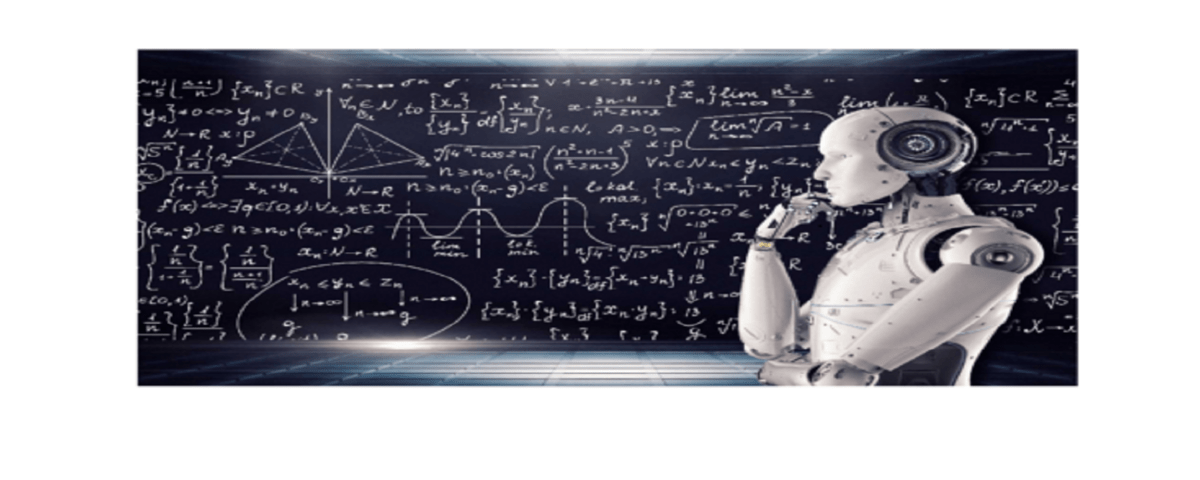
CFD or Computational Fluid Dynamics Project
مهر ۶, ۱۴۰۳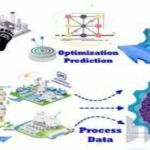
Application of Artificial Intelligence in Chemical Engineering
مهر ۷, ۱۴۰۳Introduction
Artificial Intelligence (AI), as a branch of computer science, focuses on designing computer programs and machines capable of performing tasks that humans naturally excel at, including natural language understanding, speech recognition, and image recognition. Midway through the twentieth century, machine learning emerged as a subset of AI, inspired by the conceptual understanding of how the human brain works, providing a new direction in AI design.
Python, a high-level interpreted programming language, primarily emphasizes readability and is widely known for its ease of learning while still harnessing the power of system-level programming languages when necessary. Alongside its language benefits, the surrounding community and available tools and libraries make Python attractive for workloads in data science, machine learning, and scientific computing.
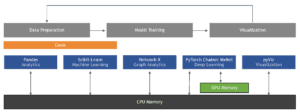
Artificial Intelligence
AI is at the core of computer science. It represents a scientific advancement where machines are developed to perform actions within the realm of human intelligence, such as learning, reasoning, self-correction, and personal planning. The primary goal of AI is to enable computers to perform tasks carried out by humans. AI is crucial for several scientific and practical fields, infiltrating everyday activities across industries, agriculture, and medicine.
For example, doctors use robots for precise surgeries. AI can enhance capabilities such as learning, pattern recognition, reasoning, problem-solving, visual perception, and language comprehension. It is divided into two types:
1. Applied AI: This more common type encompasses intelligent systems capable of performing a specific task, like autonomous driving. It is referred to as weak or narrow AI.
2. Generalized AI: This less common type includes systems that can perform any task due to their capacity to overcome obstacles or unusual situations, also termed strong AI. To date, there are no instances of strong AI available, as it remains in the evolution and growth stage.
Researchers believe AI techniques pose no threat to humanity. Yoshua Bengio, a Canadian computer science professor at the University of Montreal, argues that smart technologies should not raise concerns, as they require many years of gradual improvement before reaching significant advancements. Analysts fear these technologies due to their potential impact on fields of study and ideas still in their infancy. AI has permeated countless applications and areas.
Python Engineering Automation for AI and Machine Learning Systems
Initially, Python was merely a programming language used to shorten Android and other languages and later gained global control with its integration into machine learning (ML) and AI systems. With the aid of numerous algorithms and tool technologies, they dominate every stage of life. The intriguing aspect is that now straightforward data is evolving knowledge using Python. As history tends to predict the future well, past data informs future predictions through this advanced language.

Machine Learning
Deep learning represents a subset of machine learning focused on parameterizing Deep Neural Networks (DNNs). Physicians often work with datasets that are not suitable for contemporary deep learning methods and architectures. Deep learning is particularly compelling for handling large, unstructured datasets like text and images. In contrast, most classical ML techniques were developed with structured data considerations, meaning data is stored in a tabular format where training samples are represented as rows and observations as columns.
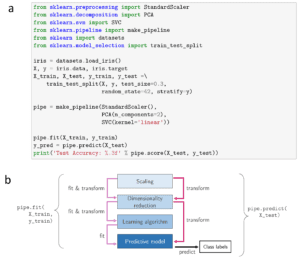
Machine learning has a close relationship with computational statistics (often overlapping), which also relies on predictions made through computing. It has a strong connection to mathematical optimization, providing methods, theories, and applications in this field. Machine learning is sometimes combined with data mining, where the latter focuses more on exploratory data analysis and is known as unsupervised learning. Machine learning can also operate without supervision, learning and creating baseline behavioral profiles for various entities and subsequently identifying meaningful anomalies.
In the context of data analysis, machine learning serves as a method for inventing complex models and algorithms that advance prediction. In commercial use, this is known as predictive analytics. These analytical models enable researchers, data scientists, engineers, and analysts to generate “reliable and repeatable decisions and outcomes” and uncover “hidden insights” by learning from historical data relationships and trends.
Machine Learning Methods
Two of the most common machine learning methods are supervised and unsupervised learning. Approximately 70% of machine learning is supervised learning.
– Supervised Learning: Algorithms are trained using labeled examples where the desired output is specified. For instance, a piece of equipment may have data points labeled “F” (for failed) or “R” (for running), thus allowing the model to adjust accordingly. Supervised learning is usually employed in applications predicting future event probabilities based on historical data, such as identifying potentially fraudulent credit card transactions.
– Unsupervised Learning: Utilized with data devoid of historical labels, the system isn’t informed of the “correct answer.” The algorithm must discern what is represented in the data. The goal is data exploration and the discovery of underlying structures, working well with transaction data. For example, it can identify customer segments with similar traits for targeting in marketing campaigns or discover key features that differentiate customer segments. Popular techniques include self-organizing maps, nearest-neighbor mapping, k-means clustering, and singular value decomposition, which are also used for topic segmentation, item recommendation, and outlier detection.
– Semi-supervised Learning: This method applies similar techniques to supervised learning, leveraging classification, regression, and prediction strategies. It is beneficial when labeling costs are high and a fully labeled training process isn’t feasible. An example is facial recognition in webcams.
– Reinforcement Learning: Commonly used in robotics, gaming, and navigation, this learning technique allows algorithms to discover which actions yield the highest rewards through trial and error. The goal is to maximize the expected reward over time by selecting actions based on a policy.
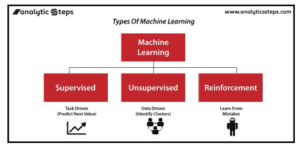
Deep Learning
In classical machine learning, prediction performance largely depends on pre-processing and feature engineering of data to construct datasets used for training models. Furthermore, converting training datasets to suitable structured tabular formats often requires manual feature engineering.
Classical machine learning algorithms continue to be considered the dominant solution for many modeling activities based on tabular datasets. Data pre-processing and feature engineering can be considered an art form aimed at extracting valuable information effectively from collected raw data while retaining maximum relevant information for prediction. Inefficient or imprecise feature engineering can lead to the loss of important data and significant decreases in prediction model performance.
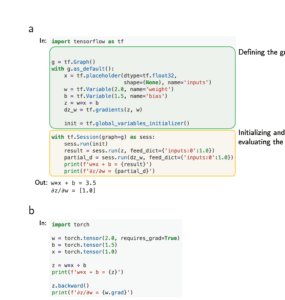
While some deep learning algorithms can accept tabular data, most advanced methods achieving the highest prediction performance are generalized and can somewhat automatically extract valuable information from raw data. This automatic feature extraction is part of their optimization and modeling architecture process. Consequently, deep learning is often described as a method for learning representations or features. However, one of the major limitations of deep learning is its ineffectiveness with smaller tabular datasets.
Deep learning (also referred to as deep structured learning, hierarchical learning, or deep machine learning) studies artificial neural networks and related machine learning algorithms containing more than one hidden layer. These deep networks:
– Utilize several layers of non-linear processing units to extract and transform features, with each subsequent layer taking the output of the previous layer as its input. Algorithms can be supervised or unsupervised with applications including pattern analysis (unsupervised) and classification (supervised).
– Based on learning (unsupervised), levels of features or representations are derived, with higher-level features being derived from lower-level features to form a hierarchical representation.
This is part of the broader field of machine learning known as representation learning.
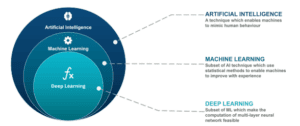
Why Python for AI?
Python is highly regarded among AI developers for several reasons:
1. Ease of Use:
– Python is easy to use and has a swift learning curve. New data scientists can easily learn Python through its straightforward syntax and better comprehension.
– Python is crucial for data scientists, featuring useful and user-friendly libraries like Pandas, NumPy, SciPy, TensorFlow, and many other concepts with which a skilled Python programmer should be well-acquainted.
2. Flexibility:
– It is excellent for developers with application and web development talent. Unsurprisingly, most data scientists prefer it over other programming languages available in the market.
3. Better Analytical Tools:
– Data analysis is a vital part of data science. Analytical tools provide insights across various frameworks crucial for performance evaluation in any business. Python is the best choice for building data analysis tools.
– Python can easily deliver better insights, retrieve samples, and connect data from large datasets. Additionally, Python is vital in self-service analytics, helping data mining organizations manage data independently.
4. Importance for Deep Learning:
– Python has numerous packages like TensorFlow, Keras, and Theano, assisting data scientists in developing deep learning algorithms. Python excels in supporting deep learning algorithms.
– Deep learning algorithms are inspired by the architecture of the human brain, enabling the construction of artificial neural networks that model human mind behavior. Deep learning neural networks assign weights and biases to various input parameters to yield the desired output.
5. Large Community Base:
– Python has a vast community of engineers and data scientists like Python.org, Fullstackpython.com, realpython.com, etc. Python developers can share their issues and thoughts with the community. The Python Package Index is an excellent place to discover various APIs of the Python programming language. Python developers consistently enhance the language, contributing to its ongoing improvement.
AI in Advanced Robotics
Some applications of AI, ML, and DL in advanced robotics include autonomous navigation, object recognition and manipulation, natural language processing, and predictive maintenance. These technologies are also employed in the development of collaborative robots (cobots) that can work alongside humans and adapt to changing environments and tasks. AI, ML, and DL can be utilized in advanced transportation systems to enhance safety, efficiency, and convenience for travelers and transportation companies.
Moreover, AI, ML, and DL play significant roles in improving assembly robot manufacturing, allowing them to operate more efficiently, safely, and intelligently. Additionally, AI, ML, and DL can assist taxi companies in providing better, more efficient, and safer services to customers.
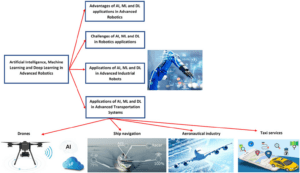
Benefits of AI, ML, and DL Applications in Advanced Robotics
AI (Artificial Intelligence), ML (Machine Learning), and DL (Deep Learning) applications have led to significant advancements in the field of robotics. Some of the benefits of AI, ML, and DL in advanced robotics include:
– Automation: AI, ML, and DL can automate many repetitive and mundane tasks in robotics, freeing up human resources to focus on more complex tasks.
– Adaptability: AI-equipped robots can adapt to changing environments and tasks, making them versatile and valuable across a wide range of industries and applications.
– Predictive Maintenance: Machine learning algorithms can help robots predict when maintenance or repairs are needed, reducing downtime and saving costs.
– Improved Decision Making: AI and ML algorithms can analyze large amounts of data and make informed decisions based on that data, enabling robots to make better choices and take appropriate actions.
– Enhanced Efficiency: By optimizing processes and reducing waste, AI, ML, and DL can improve the overall efficiency of robotic systems, leading to cost savings and increased productivity.
– Increased Safety: By automating dangerous or hazardous tasks, AI, ML, and DL can enhance workplace safety and reduce the risk of accidents and injuries.
– Cost Reduction: Implementing AI and ML applications in advanced robotics can significantly lower labor and maintenance costs.
Conclusion
Artificial Intelligence (AI) has brought fundamental changes across various fields and is recognized as one of the most important scientific advancements of the current century. Machine Learning (ML) and Deep Learning (DL), powerful subsets of AI, allow computers to learn from data without explicit programming and perform complex tasks. Python has emerged as a popular language for implementing AI, ML, and DL algorithms due to its simplicity, readability, and a wealth of powerful libraries and frameworks.
